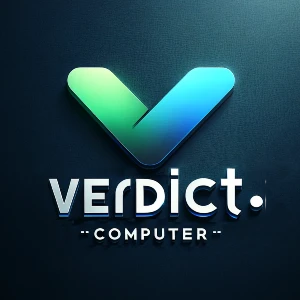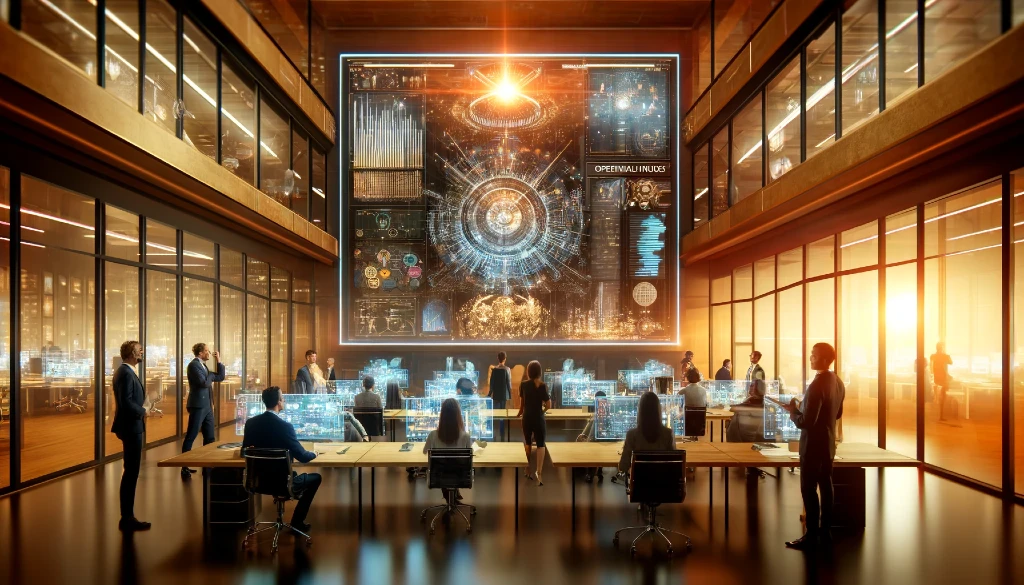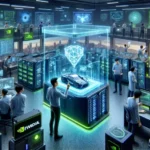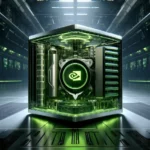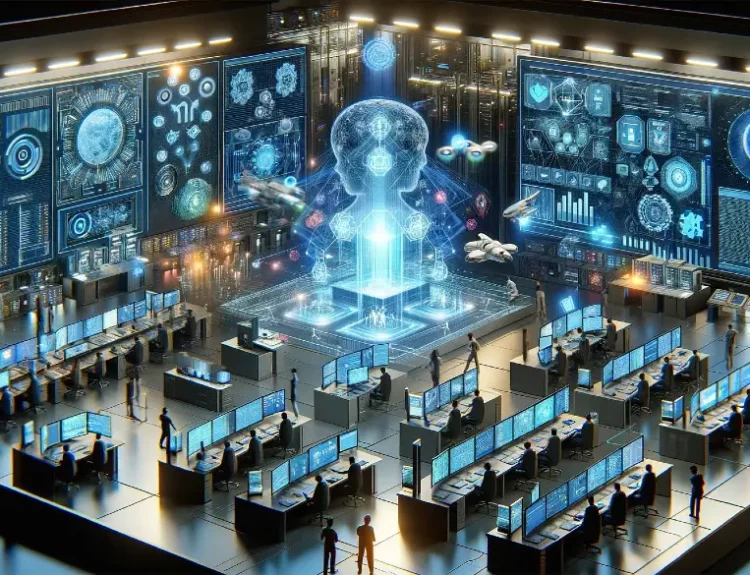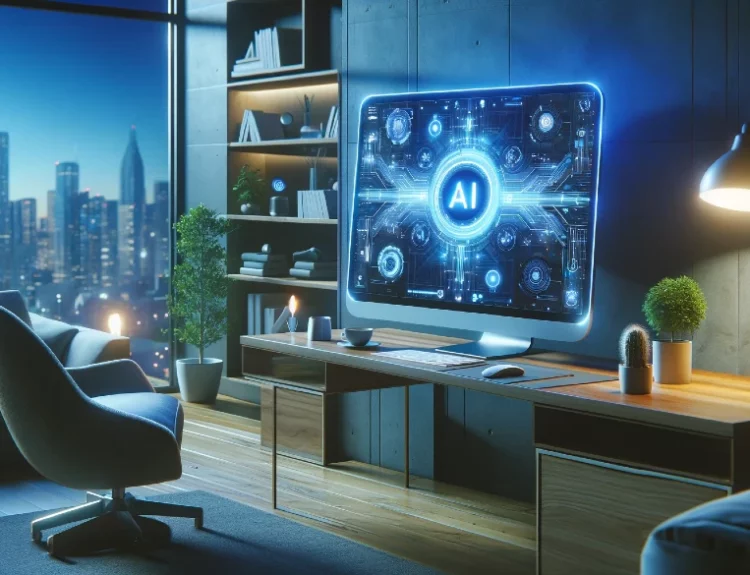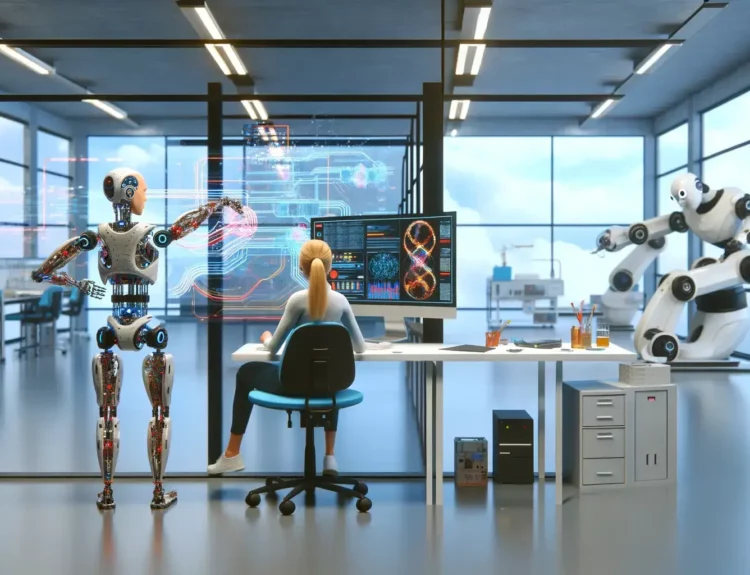Introduction
The world of technology is on a constant quest for advancement. From self-driving cars to facial recognition software, Artificial Intelligence (AI) is rapidly transforming every aspect of our lives. But AI’s influence isn’t limited to software applications. It’s quietly making waves in the very foundation of our digital world: computer architecture.
Imagine a future where computers design themselves, optimizing their hardware for specific tasks and learning to run more efficiently with every passing moment. This isn’t science fiction – it’s the exciting frontier of AI-driven computer architecture. By harnessing the power of AI, we’re on the verge of unlocking a new era of computing power and performance, pushing the boundaries of what’s possible.
The Rise of AI-Driven Architecture
For decades, computer architecture has relied on human ingenuity to design hardware components and optimize their interactions. While this approach has yielded incredible advancements, it’s a time-consuming process limited by human imagination.
This is where AI-driven computer architecture steps in. It introduces a revolutionary approach that leverages the power of AI algorithms to:
- Automate design processes: AI can analyze vast datasets and identify optimal configurations for processors, memory systems, and other hardware components. This streamlines the design process and reduces the risk of human error. (Mention keywords: AI applications in system design)
- Optimize performance: AI can continuously monitor system performance and identify bottlenecks. It can then suggest adjustments to hardware configurations or software settings to improve efficiency and power consumption. (Mention keywords: Intelligent architectural solutions, Enhancing performance with AI architecture)
- Personalize hardware: Imagine a computer that tailors its hardware configuration to your specific needs. AI-driven architecture can analyze your workload and dynamically adjust hardware resources, allocating more power to frequently used applications.
This shift from static, pre-defined architecture to a dynamic, AI-powered approach holds immense potential for the future of computing. It paves the way for:
- Faster and more efficient systems: AI can continuously optimize hardware for peak performance, leading to faster processing times and reduced energy consumption.
- Specialized hardware for specific tasks: AI can design custom hardware suited for tasks like image recognition or scientific simulations, leading to significant performance gains.
The rise of AI-driven architecture marks a paradigm shift in how we design and build computers. It’s a testament to the transformative power of AI and its potential to revolutionize the very foundation of our digital world.
Innovations in AI-powered Hardware
The marriage of AI and computer architecture is sparking a wave of exciting innovations in hardware design. Here are some key areas where AI is making its mark:
- AI Algorithms for Hardware Optimization ([Keyword]):
Traditional optimization methods rely on trial and error or pre-defined rules. AI introduces a new approach. By analyzing vast datasets of hardware performance data, AI algorithms can identify optimal configurations for everything from processor cores to memory allocation. This leads to significant improvements in efficiency and performance compared to traditional methods. - AI-powered Chip Design: Chip design is a complex and time-consuming process. AI is streamlining this process by automating tasks like layout planning and routing. AI algorithms can analyze millions of potential chip designs and identify the most efficient layouts, taking into account factors like power consumption and heat dissipation. This not only reduces design time but also leads to the creation of more powerful and energy-efficient chips.
- Memory Management with AI: Memory management is another crucial aspect of computer architecture. AI can analyze memory access patterns and predict future needs. This allows for proactive memory management, ensuring that frequently accessed data is readily available, while less-used data can be moved to slower storage. This significantly reduces latency and improves overall system responsiveness.
- The Rise of Neuromorphic Computing: Inspired by the human brain, neuromorphic computing aims to create hardware that mimics the structure and function of neural networks. AI plays a crucial role in designing and training these neuromorphic chips, allowing them to handle complex tasks like image recognition and pattern matching with exceptional efficiency.
These are just a few examples of how AI is transforming the world of computer hardware. As AI technology continues to evolve, we can expect even more groundbreaking innovations that push the boundaries of what’s possible.
AI in Action: Shaping the Future of Computing
The theoretical promise of AI-powered architecture is exciting, but let’s see it in action. Companies and research institutions are already making significant strides:
- Google’s Tensor Processing Unit (TPU): This custom-designed AI accelerator chip utilizes machine learning to optimize performance for deep learning tasks.
- Microsoft’s Project Brainwave: This ambitious project explores using FPGAs (Field-Programmable Gate Arrays) with AI to create a highly flexible and adaptable hardware platform for various workloads.
- DARPA’s SyNAPSE (Systems for Neural Architecture Processing – Scalable Efforts) program: This initiative focuses on developing neuromorphic computing systems with the potential to revolutionize areas like artificial intelligence and scientific simulations.
These are just a few examples, and the list is constantly growing. As AI-powered hardware becomes more sophisticated, we can expect it to impact numerous industries:
- Data Centers: AI-optimized hardware can significantly improve efficiency and power consumption in data centers, leading to cost savings and a reduced environmental footprint.
- Artificial Intelligence: AI-powered hardware can accelerate the development and deployment of new AI applications, pushing the boundaries of machine learning and deep learning capabilities.
- Consumer Electronics: From smartphones to laptops, AI-powered hardware can lead to more efficient and responsive devices with personalized performance.
The Future of AI and Computer Architecture
The future of AI-driven computer architecture is brimming with possibilities. Here are some potential breakthroughs we might witness:
- Self-Optimizing Hardware: Imagine computers that constantly monitor and adjust their hardware configurations based on real-time usage patterns. AI algorithms will be at the heart of this self-optimizing future, maximizing performance and efficiency.
- Specialized Hardware for Every Task: With AI’s design capabilities, specialized hardware solutions could become commonplace. We might have dedicated chips for tasks like video editing, scientific computation, or even personalized user experiences.
- Evolving Hardware Ecosystems: AI could create hardware ecosystems that learn and adapt over time. Imagine a network of interconnected devices that constantly communicate and optimize performance as a whole, pushing the boundaries of distributed computing.
The potential of AI-driven computer architecture is vast and ever-evolving. As AI continues to revolutionize the hardware landscape, we’re on the verge of unlocking a new era of computing power and efficiency, one that will shape the future of technology for years to come.
Conclusion
The future of computing is undeniably intertwined with the evolution of AI. AI-driven architecture represents a paradigm shift, promising a new era of intelligent, adaptable, and highly efficient hardware. From self-optimizing systems to specialized hardware solutions, the possibilities are truly limitless.
Are you ready to be a part of this revolution?
At Verdict, we believe in the transformative power of AI, not just in software applications, but in the very foundation of technology. Our platform leverages the power of Machine Learning (ML) and strives towards the development of Artificial General Intelligence (AGI). Just like AI-driven architecture fosters a collaborative approach between hardware and software, Verdict thrives on the collective knowledge and interactions of its community.
Every search, interaction, and shared result on Verdict contributes to a future where AI understands and grows alongside us.
Join us on this exciting journey as we explore the potential of AI and co-create a future where technology seamlessly integrates with our lives.
Check out Verdict AI today and explore how you can be a part of the future!
Don’t forget to visit our blog page for more insightful reads on the ever-evolving world of AI. Dive deeper into topics like “Unlocking Visual Intelligence: AI Applications in Computer Images” and “Enhancing User Experience: AI Integration in Computer Screens,” and many more!
We look forward to having you on board!
